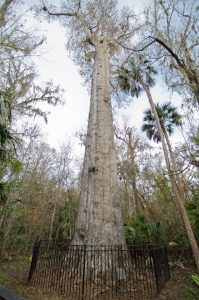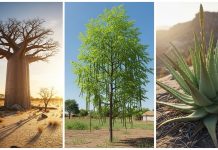You might be surprised to learn that many species on our planet have endured up to 5,000 years of silence, witnessing the birth and fall of entire civilizations. They are not mythical creatures or ancient figures from forgotten lore; they are simply trees. Join us in this article into the heart of Earth’s landscapes, where arboreal (pertaining to trees) giants like Methuselah stand as living records of our planet’s past. Prepare to discover the secrets of these silent guardians of time as their stories of persistence and strength unfold in the vastness of our natural world.
As we travel across vast landscapes, certain trees emerge as eternal witnesses, quietly attesting to the enduring fabric of life. Consider Methuselah, mentioned earlier, a Great Basin bristlecone pine in eastern California that proudly displays its 4,853-year-old past through the detailed records contained within its tree rings. This arboreal monster predates the Egyptian pyramids, prompting us to explore the secrets of its incredible longevity.
In this arboreal drama, Methuselah is not alone. Other old trees have left their imprint on time across our planet’s different terrains. These arboreal wonders, like Prometheus and The Senator, have triumphant and tragic stories to tell, each adding to the larger story of Earth’s ancient guardians.

At the core of these stories is an intriguing question: What gives these trees the power to withstand the passage of time? As we unearth the secrets of their lifespan, we gain insights not only into the complicated interplay of adaptation, chance, and resilience but also into the significant ecological contributions that make these old trees essential to the health and balance of our world.
So, what is the key to their continued existence? These old trees have survived illnesses, pests, wildfires, and human activities that have killed many of their contemporaries. These amazing trees have evolved sophisticated chemical defences, making them resilient guardians against pests and illnesses. Unlike animals, where ageing frequently results in cell death, these trees have different cellular dynamics that ensure reduced cell death in critical development regions.
On a larger scale, these trees’ basic yet effective body plan allows for modular development, allowing for the replacement of missing pieces to maintain continued life. Surprisingly, dead wood accounts for up to 95% of the structure of an elderly tree. This seemingly contradictory composition has a purpose: dead wood does not need metabolic activity, which reduces the energy required for maintenance and contributes to the tree’s lifetime. Learn more
But why is it important for these trees to endure over time? The reason lies in their significant ecological contributions. From anchoring soil with extensive root systems to leading in carbon sequestration (carbon sequestration is the vital process where trees absorb and store carbon dioxide, mitigating climate change and maintaining ecological balance.) and supporting biodiversity, these ancient trees are vital in preserving the delicate balance of Earth’s ecosystems.
As we learn more about Methuselah, Prometheus, The Senator, and many more arboreal wonders, we get a greater understanding of the delicate interplay of adaptation, chance, and resilience that allows them to survive. These trees are not mere witnesses to time; they play a crucial role in keeping our world healthy and balanced. Coming together to understand, appreciate, and safeguard younger trees becomes a shared mission, ensuring the preservation of the delicate threads of life woven into the fabric of our natural world.
Picture credits: Future Tree Health, Wikipedia

















